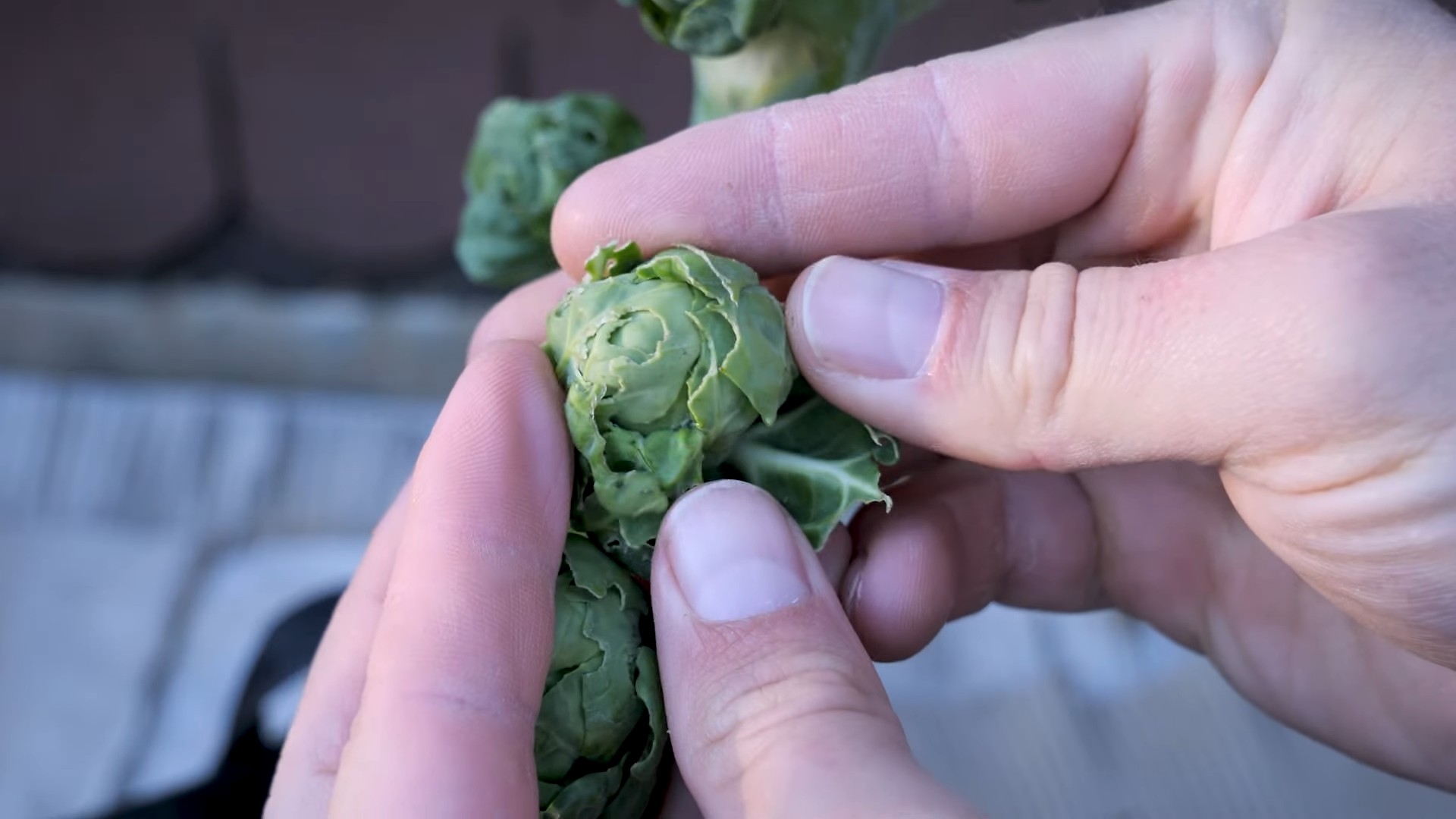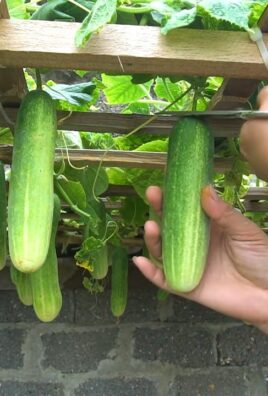Grow Purple Bush Beans and add a vibrant splash of color to your garden and your plate! Have you ever imagined harvesting beans so strikingly purple they look like they belong in a fairytale? Well, stop dreaming and start planting! For centuries, beans have been a staple crop in cultures around the world, providing essential nutrients and playing a vital role in sustainable agriculture. While green beans are a familiar sight, purple bush beans offer a unique twist, bringing both beauty and nutritional benefits to your home garden.
But why should you bother with this particular variety? Let’s face it, gardening can sometimes feel overwhelming, especially when you’re short on time and space. That’s where the magic of DIY comes in! I’m here to share some simple yet effective tricks and hacks that will make growing purple bush beans a breeze, even if you’re a complete beginner. Imagine the satisfaction of serving a colorful, homegrown meal to your family, knowing you nurtured those beans from seed to table. Plus, these purple beauties are packed with antioxidants, making them a healthy and delicious addition to your diet. So, let’s dive in and discover how easy it is to grow purple bush beans and transform your garden into a vibrant, edible oasis!

Growing Purple Bush Beans: A DIY Guide to a Vibrant Harvest
Okay, bean lovers, let’s talk about growing something a little different, a little more exciting than your average green bean. I’m talking about purple bush beans! They’re not only delicious but also add a beautiful pop of color to your garden and your plate. Trust me, once you see those vibrant purple pods hanging from your plants, you’ll be hooked. This guide will walk you through everything you need to know to successfully grow your own crop of these beauties.
Choosing Your Purple Bush Bean Variety
First things first, let’s pick a variety. There are a few different types of purple bush beans out there, and each has its own unique characteristics. Here are a few popular choices:
* Royal Burgundy: This is probably the most common and readily available variety. It’s known for its deep purple pods, excellent flavor, and disease resistance. It matures relatively quickly, usually in about 50-55 days.
* Purple Queen: As the name suggests, this variety produces beautiful, vibrant purple beans. They’re slightly longer than Royal Burgundy and have a slightly sweeter flavor. They also mature in about 50-55 days.
* Amethyst: This is a slightly less common variety, but it’s worth seeking out if you can find it. It produces long, slender purple pods with a delicate flavor. It may take a bit longer to mature, around 60 days.
I personally love Royal Burgundy because it’s reliable and easy to find, but feel free to experiment and see which variety you prefer!
Preparing Your Garden Bed
Beans are relatively easy to grow, but they do appreciate a little preparation. Here’s how to get your garden bed ready:
* Sunlight: Bush beans need at least 6-8 hours of sunlight per day. Choose a location in your garden that gets plenty of sunshine.
* Soil: Beans prefer well-drained soil that’s rich in organic matter. If your soil is heavy clay or sandy, amend it with compost or well-rotted manure. This will improve drainage and provide essential nutrients.
* pH: The ideal soil pH for beans is between 6.0 and 7.0. You can test your soil pH with a simple soil testing kit from your local garden center. If your soil is too acidic (pH below 6.0), you can add lime to raise the pH. If it’s too alkaline (pH above 7.0), you can add sulfur to lower the pH.
* Weed Removal: Clear the area of any weeds. Weeds compete with your bean plants for nutrients and water, so it’s important to get rid of them before planting.
* Tilling: Loosen the soil to a depth of about 6-8 inches. This will make it easier for the bean roots to penetrate the soil.
Planting Your Purple Bush Beans
Now for the fun part – planting! Here’s how to get your bean seeds in the ground:
1. Timing: Bush beans are warm-season crops, so you’ll need to wait until the soil has warmed up to at least 60°F (15°C) before planting. This is usually a couple of weeks after the last frost in your area. You can check your local weather forecast to get an idea of when the last frost is likely to occur.
2. Soaking (Optional): Some gardeners like to soak their bean seeds in water for a few hours before planting. This can help to speed up germination. However, it’s not essential, and I’ve had good success planting dry seeds as well.
3. Spacing: Plant your bean seeds about 1 inch deep and 2-3 inches apart in rows that are 18-24 inches apart.
4. Watering: Water the soil thoroughly after planting. Keep the soil moist but not soggy until the seeds germinate.
5. Marking: It’s a good idea to mark the rows where you planted your beans so you don’t accidentally disturb them while weeding.
Caring for Your Purple Bush Bean Plants
Once your bean seeds have germinated and the seedlings have emerged, it’s time to start caring for your plants. Here’s what you need to do:
* Watering: Water your bean plants regularly, especially during dry weather. Aim to keep the soil consistently moist but not waterlogged. Water deeply and less frequently, rather than shallowly and more often.
* Weeding: Keep the area around your bean plants free of weeds. Weeds compete with your plants for nutrients and water, so it’s important to remove them regularly.
* Fertilizing: Beans are legumes, which means they can fix nitrogen from the air in the soil. This means they don’t need a lot of fertilizer. However, you can give them a boost by side-dressing them with a balanced fertilizer a few weeks after they emerge. Follow the instructions on the fertilizer package.
* Pest Control: Keep an eye out for pests such as aphids, bean beetles, and spider mites. If you see any pests, you can try spraying them with insecticidal soap or neem oil.
* Disease Control: Beans can be susceptible to diseases such as powdery mildew and bean rust. To prevent these diseases, make sure your plants have good air circulation and avoid overhead watering. If you see any signs of disease, you can try spraying them with a fungicide.
Harvesting Your Purple Bush Beans
This is the moment you’ve been waiting for – harvesting your beautiful purple bush beans!
1. Timing: Bush beans are usually ready to harvest about 50-60 days after planting, depending on the variety. The pods should be firm, plump, and about 4-6 inches long.
2. Picking: Pick the beans when they are still tender and before the seeds inside become too large. Snap the pods off the plant carefully, being careful not to damage the plant.
3. Frequency: Harvest your beans regularly, every few days, to encourage the plant to produce more beans.
4. Color Change: Don’t be alarmed if your purple beans turn green when you cook them! This is perfectly normal and doesn’t affect the flavor. The purple color is due to anthocyanins, which are heat-sensitive pigments.
Troubleshooting Common Problems
Even with the best care, you might encounter a few problems while growing your purple bush beans. Here are some common issues and how to deal with them:
* Poor Germination: If your bean seeds aren’t germinating, it could be due to several factors, such as cold soil, poor-quality seeds, or overwatering. Make sure the soil is warm enough before planting, use fresh seeds, and avoid overwatering.
* Yellowing Leaves: Yellowing leaves can be a sign of nutrient deficiency, overwatering, or disease. Check the soil drainage and fertilize your plants if necessary.
* Pest Infestations: As mentioned earlier, beans can be susceptible to pests such as aphids, bean beetles, and spider mites. Monitor your plants regularly and take action if you see any pests.
* Disease Problems: Diseases such as powdery mildew and bean rust can also affect bean plants. Ensure good air circulation and avoid overhead watering to prevent these diseases.
Enjoying Your Harvest
Now that you’ve harvested your beautiful purple bush beans, it’s time to enjoy them! Here are a few ideas:
* Steamed or Sautéed: Simply steam or sauté your beans with a little butter or olive oil and some salt and pepper.
* Salads: Add your beans to salads for a pop of color and flavor.
* Casseroles: Use your beans in casseroles or other baked dishes.
* Pickled: Pickle your beans for a tangy and delicious treat.
* Freezing: Freeze your beans to enjoy them later. Blanch them in boiling water for a few minutes before freezing to preserve their color and flavor.
Growing purple bush beans is a rewarding experience that will add beauty and flavor to your garden and your meals. With a little care and attention, you can enjoy a bountiful harvest of these vibrant and delicious beans. Happy gardening!

Conclusion
So, there you have it! Growing your own purple bush beans isn’t just a gardening project; it’s an adventure in flavor, color, and self-sufficiency. We’ve walked through the simple steps, from selecting the right seeds to harvesting your vibrant, edible jewels. But why should you take the plunge and dedicate a little space in your garden to these beauties?
First and foremost, the taste is unparalleled. Freshly picked purple bush beans offer a crisp, slightly sweet flavor that you simply can’t find in store-bought varieties. The vibrant color adds a touch of elegance to any dish, transforming a simple salad or side dish into a culinary masterpiece. Imagine the look on your guests’ faces when you present a plate of these stunning beans!
Beyond the taste and aesthetics, growing your own purple bush beans is incredibly rewarding. There’s a unique satisfaction in nurturing a plant from seed to harvest, knowing that you’ve provided it with everything it needs to thrive. It’s a connection to nature that can be incredibly grounding and therapeutic. Plus, you’ll have the peace of mind knowing exactly where your food comes from and that it’s free from harmful pesticides and chemicals.
But the benefits don’t stop there. Purple bush beans are incredibly versatile in the kitchen. You can enjoy them raw in salads, steamed as a side dish, stir-fried with your favorite vegetables, or even pickled for a tangy treat. And don’t forget the nutritional value! These beans are packed with vitamins, minerals, and fiber, making them a healthy and delicious addition to your diet.
Looking for variations? Consider planting different varieties of purple bush beans to experiment with different flavors and textures. Some varieties are bushier than others, while some produce longer or shorter pods. You can also try companion planting to improve the health and yield of your beans. Marigolds, for example, are known to deter bean beetles, while nasturtiums can attract aphids away from your beans.
Another fun variation is to let some of your beans mature on the vine and dry them for use in soups and stews. Dried purple bush beans add a beautiful color and hearty flavor to any dish. Just be sure to harvest them before the first frost and allow them to dry completely before storing them in an airtight container.
Ultimately, the best way to discover the joys of growing purple bush beans is to simply give it a try. Don’t be intimidated if you’re a beginner gardener. These beans are relatively easy to grow and require minimal maintenance. With a little bit of planning and effort, you can enjoy a bountiful harvest of these delicious and beautiful beans.
So, grab a packet of seeds, find a sunny spot in your garden, and get ready to experience the magic of growing your own purple bush beans. We’re confident that you’ll be amazed by the results. And once you’ve harvested your first crop, be sure to share your experience with us! We’d love to hear your tips, tricks, and favorite recipes. Let’s create a community of purple bush bean enthusiasts! Don’t forget to tag us in your social media posts using #PurpleBushBeanMagic. Happy gardening!
Frequently Asked Questions (FAQ)
What are the best conditions for growing purple bush beans?
Purple bush beans thrive in well-drained soil and require at least six hours of sunlight per day. The ideal soil pH is between 6.0 and 7.0. Before planting, amend the soil with compost or other organic matter to improve drainage and fertility. Consistent watering is crucial, especially during hot, dry periods. Avoid overhead watering, as this can promote fungal diseases. Soaker hoses or drip irrigation are ideal for delivering water directly to the roots.
When is the best time to plant purple bush beans?
The best time to plant purple bush beans is after the last frost, when the soil has warmed to at least 60°F (15°C). In most regions, this is typically in late spring or early summer. You can start seeds indoors 2-3 weeks before the last frost to get a head start, but be sure to harden them off before transplanting them outdoors. Succession planting, planting a new batch of seeds every 2-3 weeks, will ensure a continuous harvest throughout the growing season.
How often should I water my purple bush beans?
Water your purple bush beans regularly, especially during hot, dry periods. Aim to keep the soil consistently moist, but not waterlogged. A good rule of thumb is to water deeply once or twice a week, depending on the weather conditions. Check the soil moisture by sticking your finger into the soil about an inch deep. If the soil feels dry, it’s time to water. Mulching around the plants can help to retain moisture and suppress weeds.
What are some common pests and diseases that affect purple bush beans?
Common pests that affect purple bush beans include bean beetles, aphids, and spider mites. Bean beetles can be controlled by handpicking them off the plants or using an insecticidal soap. Aphids can be blasted off with a strong stream of water or treated with neem oil. Spider mites thrive in hot, dry conditions, so keeping the plants well-watered can help to prevent infestations. Common diseases include bean rust, powdery mildew, and anthracnose. These diseases can be prevented by providing good air circulation, avoiding overhead watering, and using disease-resistant varieties. If you notice signs of disease, remove the affected leaves or plants immediately to prevent the spread.
How do I harvest purple bush beans?
Purple bush beans are typically ready to harvest about 50-60 days after planting. The pods should be firm, plump, and about 4-6 inches long. Harvest the beans regularly to encourage continued production. To harvest, gently snap the pods off the plant, being careful not to damage the stems. The beans are best eaten when they are young and tender. Overripe beans can become tough and stringy.
Why are my purple bush beans not turning purple?
Several factors can affect the color of purple bush beans. The most common reason is the variety of bean. Make sure you are planting a true purple bush bean variety. Temperature can also play a role. High temperatures can sometimes cause the purple color to fade. Additionally, the maturity of the bean can affect its color. The beans may be more green when they are very young and develop their full purple color as they mature.
Can I eat the purple bush bean leaves?
While the pods of purple bush beans are the primary edible part of the plant, the leaves are technically edible, but they are not typically consumed. They can be quite tough and fibrous, and their flavor is not particularly appealing. It’s best to stick to eating the pods.
How do I store purple bush beans?
Freshly harvested purple bush beans can be stored in the refrigerator for up to a week. To store them, place them in a plastic bag or container and keep them in the crisper drawer. You can also freeze purple bush beans for longer storage. To freeze them, blanch them in boiling water for 2-3 minutes, then plunge them into ice water to stop the cooking process. Drain them well and then freeze them in a single layer on a baking sheet. Once they are frozen, transfer them to a freezer bag or container. Frozen purple bush beans can be stored for up to 8 months.
Can I save seeds from my purple bush beans for next year?
Yes, you can save seeds from your purple bush beans for next year, but only if they are open-pollinated varieties. Hybrid varieties will not produce true-to-type seeds. To save seeds, allow some of the pods to mature on the vine until they are dry and brown. Harvest the pods and remove the seeds. Allow the seeds to dry completely before storing them in an airtight container in a cool, dark, and dry place. Be sure to label the container with the variety and date.





Leave a Comment